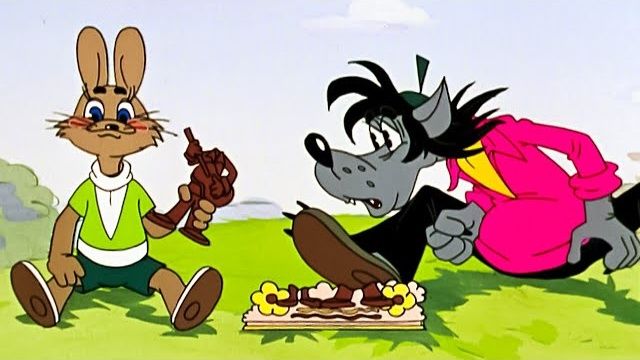Atomic Heart (opens in new tab) is being criticised (via Resetera (opens in new tab)) for the presence of a racist caricature in one of the old Soviet cartoons that air in the game’s Resident Evil-style save rooms. Those rooms, which serve as a brief respite from the game’s robo-bashing combat, offer players a chance to kick back for a bit and watch old episodes of Nu, Pogodi! (Well, Just You Wait!) a beloved Soviet children’s cartoon that first aired in 1969. But at least one of the episodes featured might be a bit too reminiscent of its era.
Nu, Pogodi! is, in essence, Soviet Tom and Jerry, starring an impeccably-dressed Soviet disco wolf (Volk) as he tries and fails to get his hands on a mischievous hare (Zayats). Atomic Heart is being criticised for a segment in episode 12: “Museum,” an episode from 1978. In a quick flash on the screen, the pair’s antics cause a statue—a racist depiction of an African tribesman—to fire the bow and arrow it’s holding, setting off a Rube Goldberg-style sequence of chaotic events that eventually deposits Volk in the sarcophagus of Ramesses the Great. You can see the episode in question on YouTube (opens in new tab) (content warning for racism).
It’s the kind of thing—like Dumbo or the Jungle Book—that would get a “This programme includes negative depictions and/or mistreatment of people or cultures (opens in new tab)” warning if it were shown on streaming services like Disney+ or Netflix, and it’s disturbing that it’s included in Atomic Heart without any warning or contextualisation.
I’ve reached out to Mundfish and Focus Entertainment to ask if there are any plans to address the clip, and I’ll update this piece if I hear back.
Mundfish might yet patch the game to deal with the issue, but I suspect it didn’t even occur to the studio that it might be a problem during development: Nu, Pogodi! is a treasured icon of 20th-century Soviet and Russian culture. Like Cheburashka (opens in new tab), it’s a symbol of childhood that’s near and dear to the hearts of millions of inhabitants of the former USSR, a fixture of museums of Soviet culture (opens in new tab), and even appeared on Soviet postage stamps in 1988 (opens in new tab). In Russia, where a racist parody of Barack Obama (opens in new tab) appeared on government-funded TV as recently as 2020, the notion that anything problematic could be in the cartoon would likely sound bizarre.





